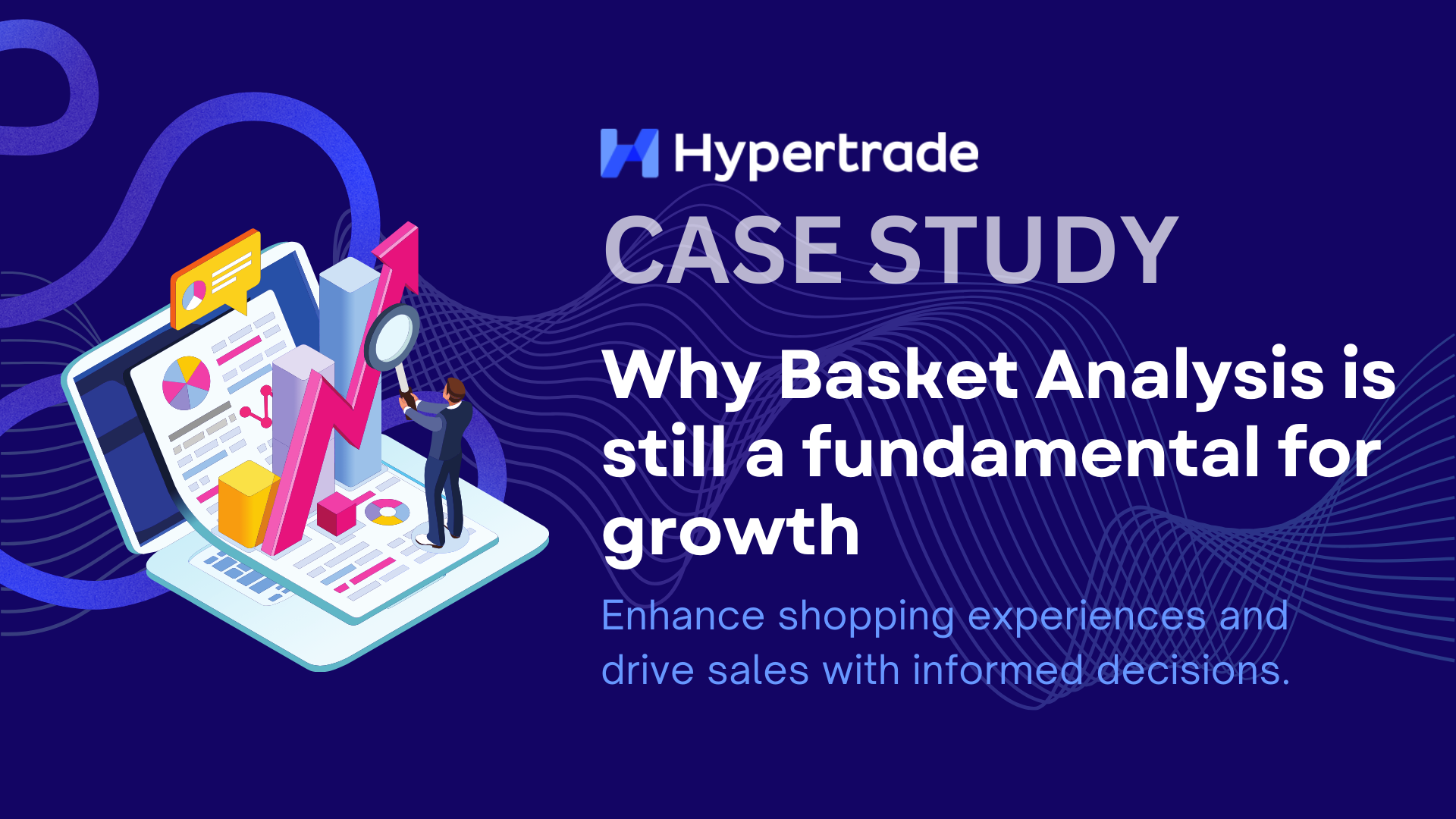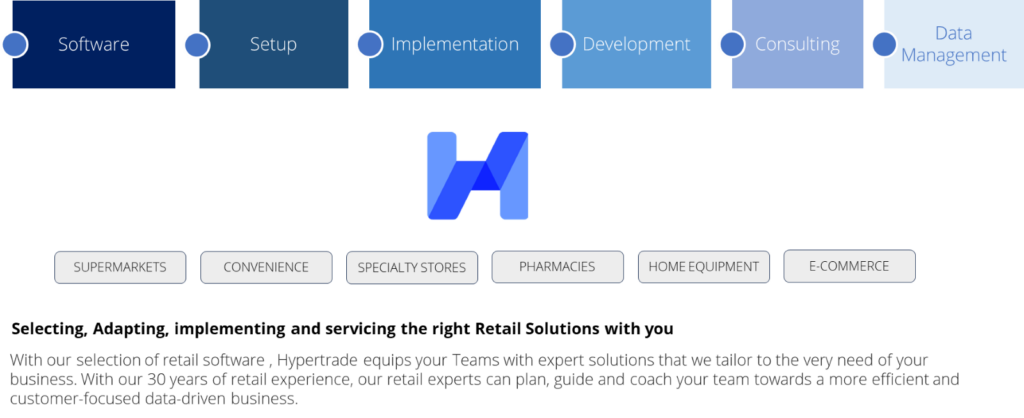In an increasingly competitive modern retail landscape, Retailers and Manufacturers are actively seeking ways to gain an edge by comprehending shoppers’ behaviors and the reasoning behind their choices.
Among the myriad of tools and strategies available for acquiring such valuable insights, shopper’s basket analysis stands out as an essential component. This analytical technique sheds light on shopper behavior by uncovering patterns of frequently co-purchased items and identifying the triggers that prompt shoppers to make their initial purchases.
By diving into shopper’s basket analysis, Retailers and Manufacturers can gain a deeper understanding of their customers, enabling them to make informed decisions to enhance their customer shopping experience and drive sales.
Challenges
Our client was facing a significant challenge when it comes to understanding their customer’s behaviors, optimizing their commercial offers, and improving Customer satisfaction. This led to a decline in sales revenue and profitability, as well as unsatisfactory outcomes in customer assortment surveys.
Challenge 1: Limited Customers insights.
Shopper’s basket analysis provides valuable insights into purchase behavior, preferences, and purchasing patterns. Without this analysis, the Marketing team was lacking the understanding necessary to segment their customer base effectively and tailor their marketing strategies accordingly. It resulted in generic or irrelevant marketing campaigns, reducing customer engagement, and lowering conversion rates.
Challenge 2: Ineffective Targeted Campaigns.
Shoppers basket analysis is the foundation of personalized product recommendations. By understanding the associations between products, Retailers, and Manufacturers can provide relevant and targeted recommendations to customers, enhancing their shopping experience. Without this analysis, product recommendations may lack accuracy and effectiveness, potentially leading to lower customer satisfaction and reduced sales.
Challenge 3: Inefficient product location
To determine the optimal product location is to identify associations between products frequently purchased together not to miss cross-selling or upselling opportunities, leading to lower sales and customer satisfaction.
Actions
To address this challenge, our Client’s Team decided to proceed step by step and focus on Categories that were experiencing performance challenges. Their goal was to understand the root causes of these challenges and determine corrective actions to solve them.
Step 1: Identify Decreasing Spending Category
Among their top categories within each division, our Client’s Team selected categories with the most significant decrease in sales. They then conducted a deep dive analysis to uncover the root cause for this decline.
Step 2: Basket Decision Tree
Their next step involved using a Basket Decision Tree to gain insights into the decrease in spending within the Confectionary category, for example.
By examining the data, the team identified two possible causes: a lower number of baskets or a decrease in spending per basket.
Interestingly, they observed that the number of baskets was actually increasing while the overall spending value was decreasing.
At this stage, 3 potential scenarios were possible:
- Shoppers were purchasing products from a lower price tier.
- Shoppers were buying fewer number of SKUs.
- Shoppers were purchasing lesser quantities.
After careful consideration, the Client’s Team concluded that customers were buying fewer number of SKUs than they previously did. Consequently, they made the decision to focus on their Top-Spending Customers to address this issue.
Step 3: Customer Segmentation
Customer segmentation provides valuable insights into customer behavior, specifically in terms of recency, frequency, and spending within different segments.
This information allows for the implementation of dynamic commercial strategies. In response to the spending challenge our Client was facing, their team decided to focus on their Top Spenders, who make up 55% of their customer base.
Step 4: Optimize Commercial Offer
Now that our client’s team had identified their target audience, the next step for them is to determine how to increase the number of SKUs in Customers’ baskets.
One of the many ways is by identifying the products that are frequently purchased together by Customers, using this information they can leverage Cross-Selling strategies.
Based on the analysis of POS data, our Client’s Team discovered that Biscuits are complementary products to Confectionery. With this insight, they created displays and promotions that highlight these complementary products, Biscuits next to the Confectionery shelves.
Step 5: Targeted Campaigns
Regardless of the implementation in stores, effective communication with Customers is essential for success. Without proper communication, the desired outcomes may be impacted.
In the early stages, our Client’s Team identified their top spending customers. Utilizing this customer list, the Client’s Marketing Team can launch targeted campaigns specifically designed to attract these shoppers to the confectionary category. They can offer special discounts that apply to all items in the complementary category (Biscuits), encouraging these customers to make additional purchases.
Results
After 6 Months
- Sales Growth increased by 17.2%
- Average spending for selected category increased by 10.8 %.
What does this show?
Understanding customers’ behaviors and preferences through Shopper basket analysis helps Retailers gain a deeper understanding of their customers.
By leveraging the insights gained, Retailers can optimize their commercial offerings, effectively segment their customer base, tailor their marketing strategies, and enhance the overall customer experience. This ultimately leads to an increase in the average number of items per basket, resulting in higher sales and profitability, and driving growth in a highly competitive Retail landscape.
On our side, we were of course happy to see that our Tools and Expertise are helping create the right value for our clients and helping optimize Shopper’s experience and delighting more Shoppers every day.
ABOUT US
We are a Tech driven Category & Shopper Management Platform
We help retail players who know data & people are their next opportunity for growth.
We make data mining a breeze & build powerful tools teams love, that help them understand shoppers and support their category decisions.







